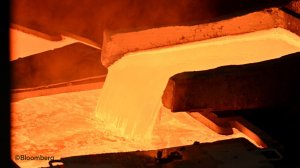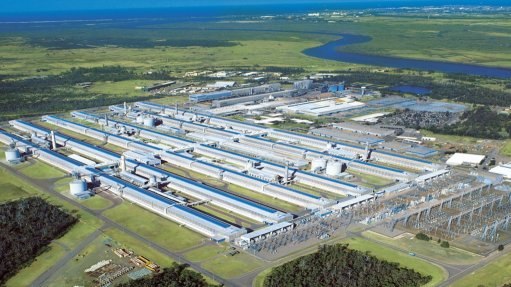Smelting oversupply, investment affect copper market


OUT OF BALANCE Oversupply of smelting capacity has led to a sharp decline in spot treatment and refining charges
Photo by Source:
An oversupply of copper smelting capacity is leading to low treatment and refining charges (TCRCs) and shifting project investment trends are impacting on the longer-term copper mine development outlook, according to data and analytics solutions provider Wood Mackenzie copper supply senior analyst Emily Brugge.
Speaking at a Wood Mackenzie Metals and Mining briefing last month, she said there had been a sharp decline in spot TCRCs since late 2023, with smelter purchases having dropped to almost $0/t, while mine-to-trader TCRCs remain “in negative territory”.
“These are . . . the lowest spot TCRCs that we have recorded in Wood Mackenzie’s history.”
However, Brugge noted that this downturn was not supply- driven, as concentrate supply continued to grow at a reasonable pace, largely owing to an oversupply of smelting capacity.
Since 2023, additions to global smelting capacity have outpaced additions to concentrate producing capability, with this disparity expected to widen in 2025.
Historically, China has led global smelting capacity growth, contributing about 75% of the increase since 2000.
For the remainder of this year and going into 2025, Brugge anti- cipates the continued expansion of copper-smelting capacity in China, alongside new greenfield smelters globally, will significantly contribute to the overcapacity in smelting.
Although a significant portion of the main additional smelter capacity has been constructed, production is yet to start at several of the facilities.
Brugge added that securing concentrate feed has been challenging for smelters, a trend she expects to prevail in 2025.
Without reductions in smelter capacity, use rates are likely to trend downwards, particularly for nonintegrated smelters, which might face delays or slower-than-expected ramp-ups.
“As a result, TCRCs are likely to remain at very low levels, and we’re forecasting annual terms to hit a floor next year.”
This will affect smelter margins more broadly and could potentially lead to the rationalisation of smelter capacity, which is necessary to rebalance the market, elaborated Brugge.
Project Delivery
In terms of new copper mine delivery, copper demand is predicted to remain strong in the long-term, owing to its role in the energy transition, with primary copper continuing to be essential, explained Brugge.
However, Wood Mackenzie’s analysis of the nature of new copper-producing projects that are under way, as well as their financing structures, illustrates a shift in project types and locations when compared with those of previous cycles.
According to Brugge, new projects – comprising more than six-million tonnes a year – were approved from 2010 to 2013, with more than half of these projects – predominantly greenfield developments – located in Latin America.
In the recent cycle, from 2020 to 2023, fewer projects with a lower volume – comprising under four-million tonnes a year – have been sanctioned.
There has been a marked shift in new-project location, with more projects being sought in Africa, as opposed to Latin America during the cycle from 2010 to 2013, while an increasing interest is being devoted to brownfield project development globally.
Investment trends have also evolved, with major copper producers now representing a minority in terms of the volume of projects sanctioned, while greater investment from China has become increasingly prominent, according to Brugge.
Of projects sanctioned since 2020, which Brugge estimates to exceed $50-billion, nearly half have included involvement from Chinese investors.
“This shift in investments is really interesting at a time when there’s . . . increased focus on security of supply.”
Brugge also noted the geographical division of investment sources with these trends.
Investment Trends
In the current project pipeline, traditional copper regions in the Americas continue to dominate, with major producers being well established and remaining interested in the region, demonstrated by recent merger and acquisition activity.
However, these projects are generally more capital intensive, owing to lower-grade ore and other challenges, such as securing water sources, which make these projects more difficult to advance.
In comparison, projects in Africa are typically lower in capital expenditure, with many funded by Chinese investors and, more recently, gaining increased interest from sovereign wealth funds.
Emerging jurisdictions, such as Argentina, Pakistan and the Philippines, presented new opportunities, but also political and security risks, highlighted Brugge.
While major producers have been increasing their presence in Argentina, Western banks showed some reluctance to finance these projects, owing the risks, she explained.
Wood Mackenzie anticipates that investment from Chinese companies, and sovereign wealth funds seeking to secure copper supply to expand their influence, will continue in the foreseeable future on a global scale.
Article Enquiry
Email Article
Save Article
Feedback
To advertise email advertising@creamermedia.co.za or click here
Press Office
Announcements
What's On
Subscribe to improve your user experience...
Option 1 (equivalent of R125 a month):
Receive a weekly copy of Creamer Media's Engineering News & Mining Weekly magazine
(print copy for those in South Africa and e-magazine for those outside of South Africa)
Receive daily email newsletters
Access to full search results
Access archive of magazine back copies
Access to Projects in Progress
Access to ONE Research Report of your choice in PDF format
Option 2 (equivalent of R375 a month):
All benefits from Option 1
PLUS
Access to Creamer Media's Research Channel Africa for ALL Research Reports, in PDF format, on various industrial and mining sectors
including Electricity; Water; Energy Transition; Hydrogen; Roads, Rail and Ports; Coal; Gold; Platinum; Battery Metals; etc.
Already a subscriber?
Forgotten your password?
Receive weekly copy of Creamer Media's Engineering News & Mining Weekly magazine (print copy for those in South Africa and e-magazine for those outside of South Africa)
➕
Recieve daily email newsletters
➕
Access to full search results
➕
Access archive of magazine back copies
➕
Access to Projects in Progress
➕
Access to ONE Research Report of your choice in PDF format
RESEARCH CHANNEL AFRICA
R4500 (equivalent of R375 a month)
SUBSCRIBEAll benefits from Option 1
➕
Access to Creamer Media's Research Channel Africa for ALL Research Reports on various industrial and mining sectors, in PDF format, including on:
Electricity
➕
Water
➕
Energy Transition
➕
Hydrogen
➕
Roads, Rail and Ports
➕
Coal
➕
Gold
➕
Platinum
➕
Battery Metals
➕
etc.
Receive all benefits from Option 1 or Option 2 delivered to numerous people at your company
➕
Multiple User names and Passwords for simultaneous log-ins
➕
Intranet integration access to all in your organisation



















